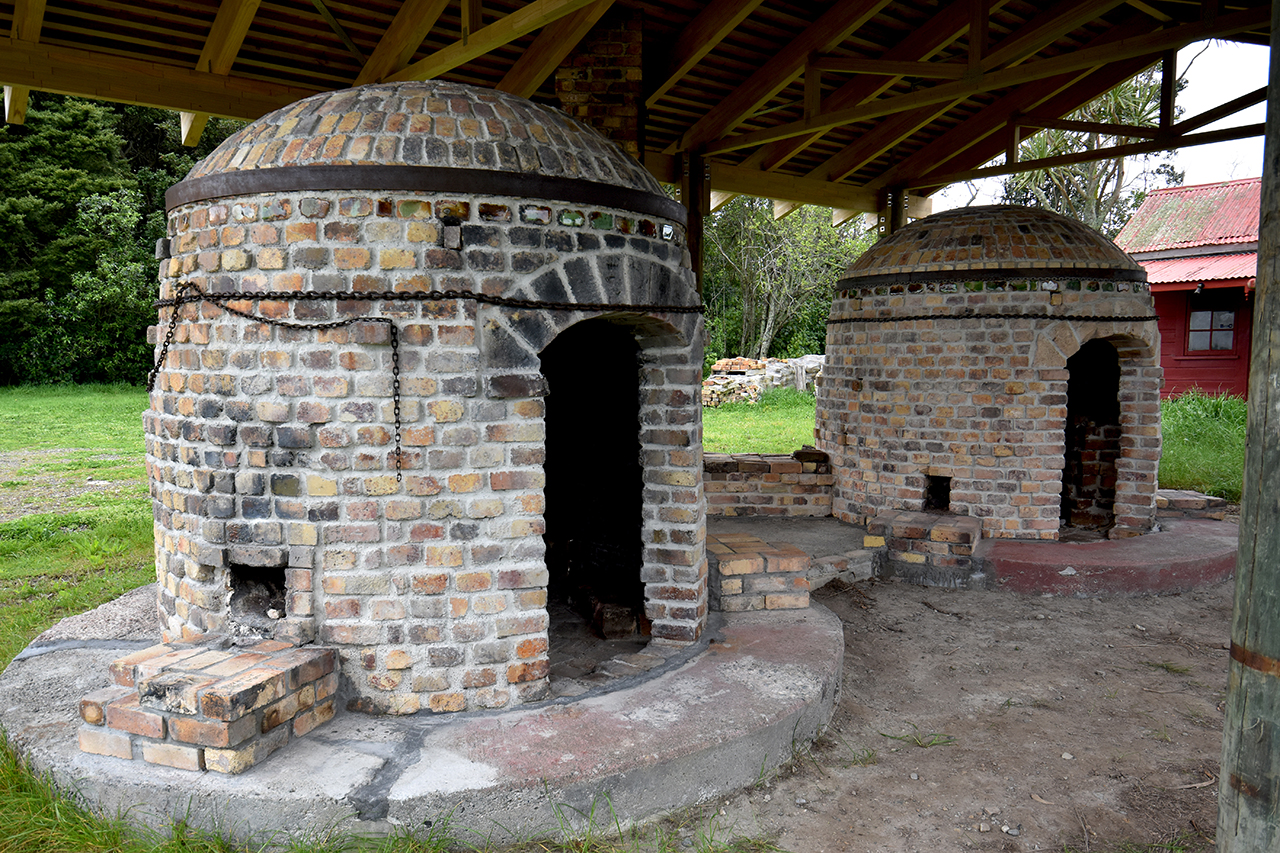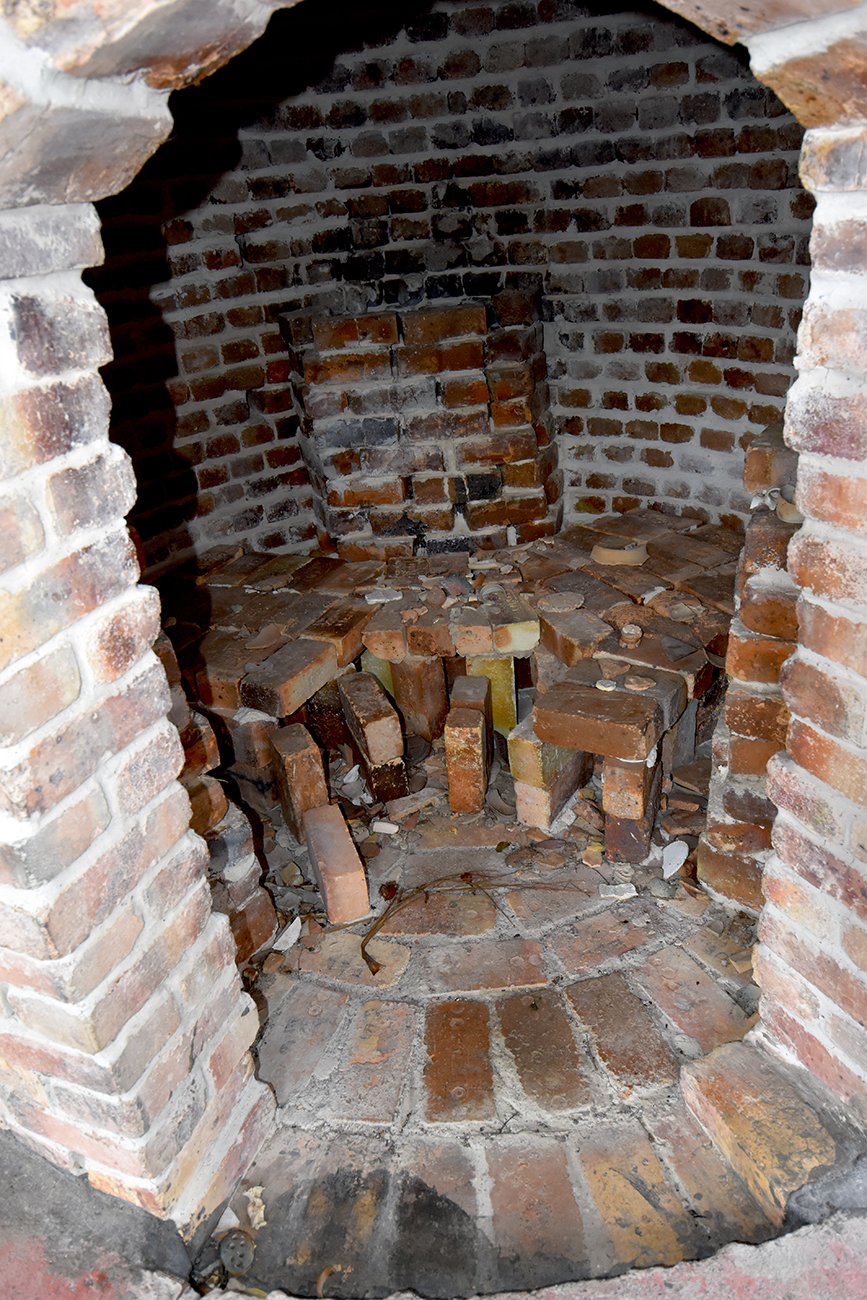Mirek Smíšek Beehive Kilns
Welcome to Heritage New Zealand
The two beehive kilns at Te Horo were constructed by Mirek Smíšek OBE (1925-2013) in 1970 and 1971. A charismatic figure, Smíšek is remembered and celebrated as New Zealand’s first professional studio potter. Today the kilns represent the centrality of studio pottery to New Zealand’s craft scene in the 1970s and provide insight into studio pottery practice at the time. Smíšek gained fame, in particular for his mastery of the technique of salt glazing, and his output was recognised by an OBE in 1990. The effort to move and rebuild the kilns in 2021 is an indication of esteem in which they are still held.
The Kāpiti Coast has a temperate climate and an abundance of natural resources. Because of this a succession of iwi and hapū battled to make their home there and land occupation in the region was unstable. Early Māori settled in the area included Ngāti Māmoe, Muaūpoko, Ngāti Apa and Rangitāne; later Te Rauparaha and his Raukawa and Taranaki kin and allies made their home there. In 1834, inter-tribal conflict erupted between Ngāti Raukawa and Te Āti Awa; iwi boundaries were again redrawn and Ngāti Raukawa became the kaitiaki for Te Horo. In 1881 the Native Land Court granted Ngākaroro No.3 to Ngāti Huia (Raukawa) and Ngāti Kauwhata hapū. The land in question was sold from Māori ownership in 1906 when Archibald Hall purchased the property. After a succession of owners Mirek Smíšek, a Czechoslovakian-born potter, and his wife Jane Beverley brought the property in 1970 and Smíšek designed and constructed the beehive kilns there for firing their pottery.
The two brick beehive kilns have a striking appearance. The domed kilns are 2.25 metres high internally and have a capacity of approximately 4.2 m3. Each kiln sits on a concrete base. Both are of uniform dimensions and have openings with voussoirs on their southern side. The two kilns look very similar on the exterior, but only the most western one was used for the salt firing method for which Smíšek was best-known. An external brick flue originally connected both to provide ventilation to the kilns. A red shed (formed of an 1880s cottage) and the former Te Horo railway station, both relocated on the property by Smíšek, also formed part of his pottery centre and are included in the listing extent.
Smíšek passed away in 2013 and potters John and Helen Wi Neera bought the property, continuing the pottery’s salt-glazing tradition and caring for the land and buildings. Unfortunately, the two Beehive kilns sat directly in the path of the new Peka Peka to Ōtaki Expressway. A large section of the western side of the property became the path for the new roadway, with an anticipated eventual subdivision of the property. Faced with the dilemma of saving the kilns, in 2021 Waka Kotahi NZ Transport Agency undertook to relocate the kilns 20 metres east of their original location but still on the same land parcel. Potter Duncan Shearer and master brick layer Rick Meade worked together to dismantle and rebuild the kilns and flue. The kilns are now unable to be used to fire pottery but function as a memorial to Smíšek's artistry. The Mirek Smíšek Arts Trust / The Kilns at Te Horo has formed to develop a new arts centre here with the kilns at its heart, and the restored railway station as an artist’s residence.
The Kāpiti Coast has a temperate climate and an abundance of natural resources. Because of this a succession of iwi and hapū battled to make their home there and land occupation in the region was unstable. Early Māori settled in the area included Ngāti Māmoe, Muaūpoko, Ngāti Apa and Rangitāne; later Te Rauparaha and his Raukawa and Taranaki kin and allies made their home there. In 1834, inter-tribal conflict erupted between Ngāti Raukawa and Te Āti Awa; iwi boundaries were again redrawn and Ngāti Raukawa became the kaitiaki for Te Horo. In 1881 the Native Land Court granted Ngākaroro No.3 to Ngāti Huia (Raukawa) and Ngāti Kauwhata hapū. The land in question was sold from Māori ownership in 1906 when Archibald Hall purchased the property. After a succession of owners Mirek Smíšek, a Czechoslovakian-born potter, and his wife Jane Beverley brought the property in 1970 and Smíšek designed and constructed the beehive kilns there for firing their pottery.
The two brick beehive kilns have a striking appearance. The domed kilns are 2.25 metres high internally and have a capacity of approximately 4.2 m3. Each kiln sits on a concrete base. Both are of uniform dimensions and have openings with voussoirs on their southern side. The two kilns look very similar on the exterior, but only the most western one was used for the salt firing method for which Smíšek was best-known. An external brick flue originally connected both to provide ventilation to the kilns. A red shed (formed of an 1880s cottage) and the former Te Horo railway station, both relocated on the property by Smíšek, also formed part of his pottery centre and are included in the listing extent.
Smíšek passed away in 2013 and potters John and Helen Wi Neera bought the property, continuing the pottery’s salt-glazing tradition and caring for the land and buildings. Unfortunately, the two Beehive kilns sat directly in the path of the new Peka Peka to Ōtaki Expressway. A large section of the western side of the property became the path for the new roadway, with an anticipated eventual subdivision of the property. Faced with the dilemma of saving the kilns, in 2021 Waka Kotahi NZ Transport Agency undertook to relocate the kilns 20 metres east of their original location but still on the same land parcel. Potter Duncan Shearer and master brick layer Rick Meade worked together to dismantle and rebuild the kilns and flue. The kilns are now unable to be used to fire pottery but function as a memorial to Smíšek's artistry. The Mirek Smíšek Arts Trust / The Kilns at Te Horo has formed to develop a new arts centre here with the kilns at its heart, and the restored railway station as an artist’s residence.


Mirek Smíšek Beehive Kilns, Te Horo | M Williamson | 20/09/2022 | Heritage New Zealand Pouhere Taonga


